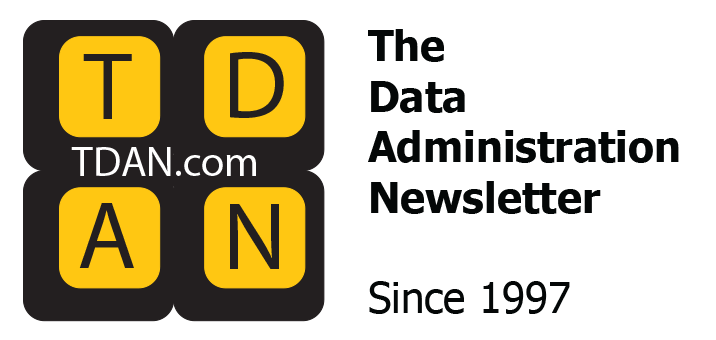
Artificial intelligence (AI) is changing how businesses handle their data, and governance practices need to keep up. Many organizations struggle with finding reliable data and analytic content, highlighting the need for company-wide governance backed by tools that manage information assets across all formats. While approaches like semantic layers in modern architectures can help connect governance to actual use, most companies still rely on outdated rulebooks that don’t address AI’s unique challenges. Smart organizations recognize that successful AI requires governance — including dynamic AI governance that is flexible enough to adapt quickly while still managing risks, and that balances innovation with appropriate controls.
Recognizing AI’s Impact on Data Strategy
AI changes how organizations use data — it’s faster, needs more information, and works in much more complex ways. While regular analytics tools just follow instructions, AI learns from data, makes its own decisions, and keeps changing over time. The old rulebooks simply weren’t built for this complex data usage.
This shift brings new risks. AI can pick up and even strengthen biases hidden in training data, its performance can drift away from what you want as the world changes, and it often makes decisions in ways that aren’t easy to explain. Traditional governance approaches with yearly reviews and fixed policies can’t manage this scale of data innovation.
Public perception adds another dimension to consider. According to one recent study, only 28% of people trust AI, fewer than half accept it, and 9% reject it outright. This distrust and hesitant acceptance highlight why proper governance matters — maintaining public confidence requires transparent, responsible AI practices.
Integrating AI into engineering management accelerates innovation and boosts forward-thinking data governance policies. AI engineers are responsible for building and installing AI-based systems. In this way, they must be aware of AI’s potential with regard to data, as well as its limitations. As companies start using AI for quality checks, maintenance predictions, and risk reviews, AI governance needs to evolve, too. AI is becoming integral in these areas of business. Future engineers can help create governance that adapts quickly to AI’s applicational growth while keeping the right safety measures in place.
For companies making this transition to using AI systems, governance can’t just be a separate checkbox exercise anymore. Data policies need to work right alongside development processes, setting boundaries that protect everyone without slowing down progress. Companies need rules that are both strong and adaptable, capable of handling the basics while adjusting to new situations as they come up.
The Case for Dynamic, Policy-Driven Governance
How do you know when your data policies aren’t keeping up with AI? Watch for red flags: nobody clearly overseeing models, confusion about who’s responsible when AI makes decisions, spotty records about where training data comes from, and no systems to check for bias. When your teams start creating workarounds to get AI projects done, your governance rules probably aren’t working anymore.
Good AI governance needs policies that grow and change — think living documents, not stone tablets. Companies need rules that lay out core principles while also including built-in triggers for reviews and adaptations. This keeps policies useful during technology changes and prevents the need to start from scratch every time.
Getting ahead of problems is much better than cleaning up after them. Don’t wait for something to go wrong before updating your policies. Instead, consider how new AI projects might challenge your current rules. This forward-looking mindset requires your data people, AI developers, legal team, and business leaders to work together regularly.
Your organization’s security needs make this even more important. Factors to consider when reviewing security policies include company changes, new technologies, and outside pressures, which all happen faster when you use lots of AI. You might need to check security policies quarterly or even monthly instead of yearly, depending on how quickly you’re rolling out AI and how sensitive your data is.
Good dynamic governance both protects and enables. Well-crafted policies shield your company from compliance headaches and reputation damage while giving your innovation teams confidence to move forward with proper safeguards.
Principles for AI-Responsive Data Governance
Three things matter most for responsible AI governance: ethics, accountability, and transparency. Ethics might start with following rules, but it quickly becomes a larger issue of considering how your AI affects society and whether it can keep users’ trust. Accountability means that someone clearly owns each AI system, from creation through daily use. Transparency is about documenting what was done, making processes clear, and explaining how your AI reaches its conclusions.
Handling and addressing AI bias takes specific approaches, such as checking if training data represents diverse groups, watching for unfair impacts in what the AI produces, and fixing biases when they occur. For explaining how AI works, match your efforts to the risks. For instance, higher-risk uses need more thorough documentation and clearer explanations.
Data governance is foundational for enterprise AI because it monitors the lifecycle and application of data, facilitating safe AI adoption in businesses. Large language model (LLM) systems like ChatGPT need business data to train with; however, the risks of training LLM models on sensitive data include exposing private information and possible re-identification of individuals. Governance helps create clear steps for determining which requirements apply to each AI application and how you’ll meet and document these requirements as a business that manages sensitive data.
Try setting up guardrails that create safe boundaries while still allowing people to innovate inside of them. Practical steps include: different approval paths based on risk, clear lists of acceptable uses and data sources, validation requirements for models, and monitoring systems for AI in production. These guardrails protect both privacy and compliance while enabling responsible development.
When these principles are well-implemented, AI stays safe, compliant, and scalable from small experiments to company-wide systems.
Establishing Strong Policy Foundations
Good data management policies create the groundwork for AI success, establishing a structure that both encourages innovation and protects the company. Strong policies cover data quality, who can access what, how long to keep data, and how to classify it, which are all essential for AI to work reliably.
When writing adaptable policies, focus on principles, rather than on strict rules that quickly go stale. Good policies make clear who’s responsible for what, spell out governance processes, and include procedures for regular review and updates. They should be written in plain language so that everyone — technical professionals and business people alike — can understand and follow them.
Build scalability into policies from day one. This means creating governance structures that can handle more data, more complex AI, and new ways of using it. A modular approach lets companies protect their core principles while adding specific guidance for new technologies as they emerge.
Make sure that data governance aligns with business goals. Connect governance activities directly to creating value, managing risks, and gaining competitive advantage. Data management policies can help with governance, by ensuring that data is maintained close to its source in a secure manner, is easy to access, and is recorded following clear standards that support both daily operations and long-term goals.
Final Thoughts
AI governance requires adaptable rules rather than static frameworks. The technology moves quickly, makes complex decisions, and learns independently, creating risks that standard policies can’t address. Thus, it’s imperative to review your existing policies with AI specifically in mind: Do the policies cover training data quality, bias monitoring, decision explanations, and ongoing validation? If you start by addressing these questions, you can develop governance that grows with your AI capabilities.
